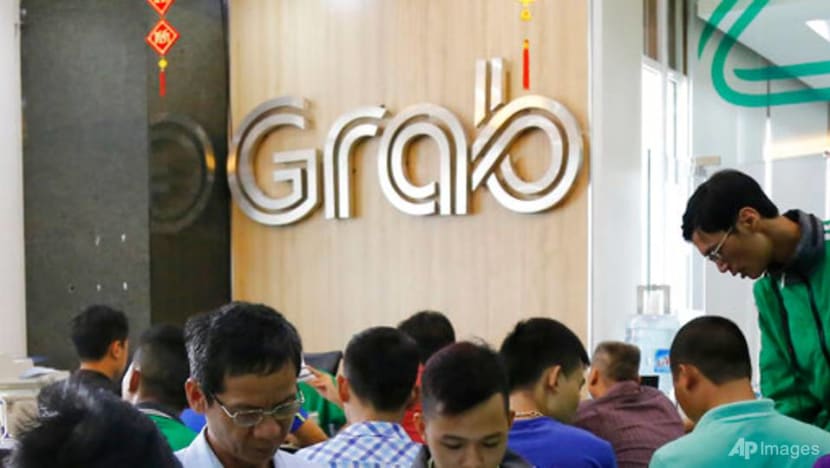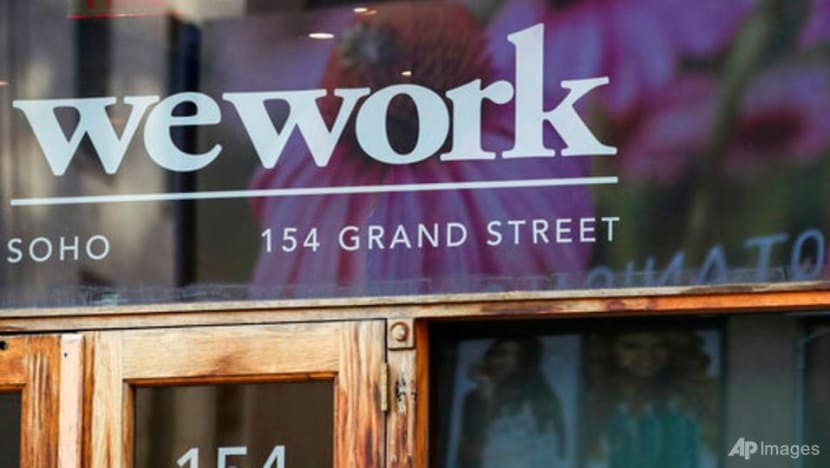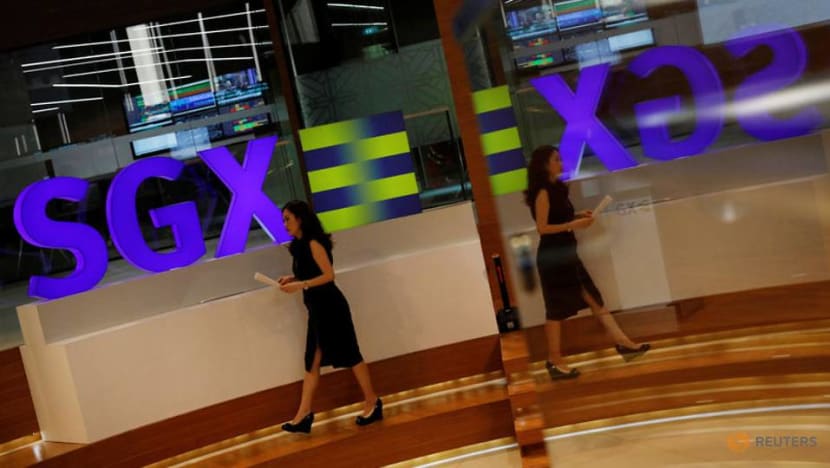commentary Commentary
Commentary: SPACs are all the rage now but few aware of hidden dangers
Retail investors are tempted to put some money into the next Facebook or Google, in the hope of striking it rich but St James’s Place Wealth Management’s Martin Hennecke advises to stay away if you can’t handle the risks.

Grab US SPAC Merger
SINGAPORE: SPACs – or Special Purpose Acquisition Companies – are attracting interest in Asia in major financial hubs like Hong Kong and Singapore, looking to list such investment vehicles on their exchanges.
In April, the ride hailing-to-food delivery super app, Grab, announced that it expects to raise approximately US$4 billion on Nasdaq in the largest-ever SPAC listing, marking a significant moment for Southeast Asian start-ups as well as the booming market for SPACs.
While SPACs have been touted the new driving force of capital markets, fundraising and deal-making have recently begun to slow down from a heady pace due to increasing scrutiny from regulators.
In fact, regulators like the Securities and Exchange Commissions in the US and Hong Kong have expressed concerns over such investment vehicles and warned retail investors on the importance of being cognisant of potential risks before jumping on the bandwagon.
READ: SPAC mania: What is it and will it be the next big thing in Asia?
READ: Commentary: That Gojek and Tokopedia merger should have happened a long time ago
With concerns that the exponential growth of SPACs will eventually lead to a market bubble, there are signs that the SPACs boom will soon pass its zenith, which may not necessarily be all bad news.
UNKNOWN RISKS BREWING UNDERNEATH THE SURFACE
Without a doubt, the global pandemic has had a hand in fuelling the wave of investor interest in new technology sector companies. With SPACs as a listing structure, it has enabled companies, sponsors and other parties to cash in on the boom.
On the surface, SPACs offer a compelling story where expensive investment banks are cut out of the process, offering retail investors supposed rare opportunities to buy into high-growth tech start-ups – the potential Amazons and Microsofts of tomorrow - right before the explosive growth phase sets in.
However, while the rare chance to satisfy one’s robust appetite for high potential investments may seem attractive, not all is what it seems, and the good stories may not necessarily translate into compelling investments. Amid growing interest and enthusiasm in SPACs, the consideration of price and due diligence of the underlying risks may inadvertently take a backseat.

Recent analysis has shown records of these cash shell structures delivering poor returns, with the majority falling below the standard price where their shares were first sold to the public.
According to a study by the Yale Journal on Regulation , completed SPAC mergers between January 2019 and June 2020, on average, have lost 12 per cent of their value within six months following the merger, despite the Nasdaq having risen by approximately 30 per cent during the same period.
READ: Commentary: What’s behind Grab’s reported SPAC listing
The ostensibly poor investment record of SPACS is therefore a gripping reminder of the overall lack of transparency and disclosures in SPAC transactions which poses significant risks, especially to less experienced investors who may rush headlong into this without understanding these risks.
CONFLICT OF INTEREST BETWEEN SPONSORS AND THE EVERYDAY INVESTOR
Contrary to popular perception, SPACs are in fact very expensive for retail investors choosing to hold shares through the merger.
This is due to many reasons such as high sponsor fees, the amplification of underwriting fees and even warrant dilution, where the initial group of investors (typically hedge funds), exit during the pre-merger stage.
The same study by the Yale Journal on Regulation showed that the median effective underwriting fees for SPACs was approximately 16.3 per cent when the amplification effect is accounted for, compared to the median IPO underwriting costs of 7 per cent.
READ: Commentary: Deliveroo’s IPO is a lesson to not underestimate investors
When the sponsor’s promote and warrant dilution have been accounted for, the median total costs can add up to a staggering 50.4 per cent.
There is also a clear conflict of interest between sponsors and public investors. Sponsors tend to only partake in the upside potential but not the downside risk, which can result in a poor choice of SPAC targets.
Because SPAC sponsors receive essentially free shares and IPO investors get free warrants and rights, the returns to public investors are inevitably diluted.
The initial group of IPO investors who redeem their shares pre-merger are often able to earn an attractive and essentially risk-free return, while shareholders who remain invested through the merger tend to do poorly when post-merger shares decline in value.

Moreover, given that SPACs must acquire and merge with an operating company within a limited timeframe of two years, sponsors are inherently incentivised to cut corners and close a sub-optimal deal, rather than risk having to return money to investors and be left with covering the pre-merger fee outlays from their own pockets.
READ: Commentary: Grab’s blockbuster deal comes at questionable time for SPAC market
While advocates claimed that SPACs are a cheaper way to go public as compared to an IPO, this only holds true from the perspective of the target company but not secondary investors, to whom the costs are transferred. It seems increasingly apparent how the structure of SPAC companies stacks the deck against SPAC shareholders.
NOT ALL BAD BUT SAFEGUARDS AND CAUTION REQUIRED
It is interesting that even though ESG investing has gained substantial traction in the past years, there remains a lack of care when it comes to basic accountability and transparency to investors in business practices.
Ethical business practices should continue to apply to everything that falls within the financial markets, rather than to serve a flavour-of-the-day marketing purpose.
Fortunately, Singapore’s local bourse, SGX, seems to share this view. SPAC rollout proposals for the SGX include measures such as a cap on dilution, restriction of only independent shareholders rather than sponsors being able to vote for a merger, as well as only allowing investors who vote against a merger to redeem their shares.

These measures will go a long way in addressing the inherent problems such as the lack of transparency that are characteristic of typical US SPAC structures.
However, challenges still remain and regulators have to continue ensuring that safeguards and disclosure requirements are in place so that SPAC investors have the necessary information to decide whether or not they should go ahead with the investment.
It should be pointed out that a few elements used in SPACs do have their upsides as well. For instance, the existing management team can benefit from the expertise of SPAC sponsors and the deep level of analysis that investors in a private investment round would typically undertake before committing.
An experienced sponsor team can also provide strategic and operational support, helping to fill gaps and broadening talent across the organisation.
READ: Commentary: Why a bumper crop of Southeast Asian tech unicorns look set to IPO this year
READ: Commentary: Anthony Tan, the ‘unabashedly ambitious’ man behind Grab
However, because a SPAC is essentially a “reverse-takeover” vehicle, where the target company is not initially identified, investors looking to get in on the action will only have sponsors' credentials to base their investment decisions on.
This has meant an increasing number of high-profile investors, entrepreneurs, celebrities and even athletes assuming the role of sponsors, with the hopes of raising capital based solely on who they are and not what they are acquiring.
This can lead to difficult situations when even prominent venture capitalists such as Chamath Palihapitiya, Wall Street’s so-called king of SPACs, see their companies’ value plunge amid the frenzy.
Nonetheless, investors should be extremely careful about investing in any SPACs in their current structures, if not simply avoid them altogether. Even if the structural issues are resolved, hopefully with SGX’s amended proposals, further due diligence and consideration of risks remain highly important.
Diversification across different sectors and styles (for example, balancing growth with value) and geographies for any investments, whether through SPACs, IPOs or equities generally, is critical in our view to enable sound risk management and achieve optimal risk adjusted long term return outcomes.
Martin Hennecke is the Asia Investment Director at St. James’s Place Wealth Management.
Listen to Martin and Alvin Chow, CEO of financial education company Dr Wealth, speak on Money Mind's 5 things you need to know about investing in SPACs:















